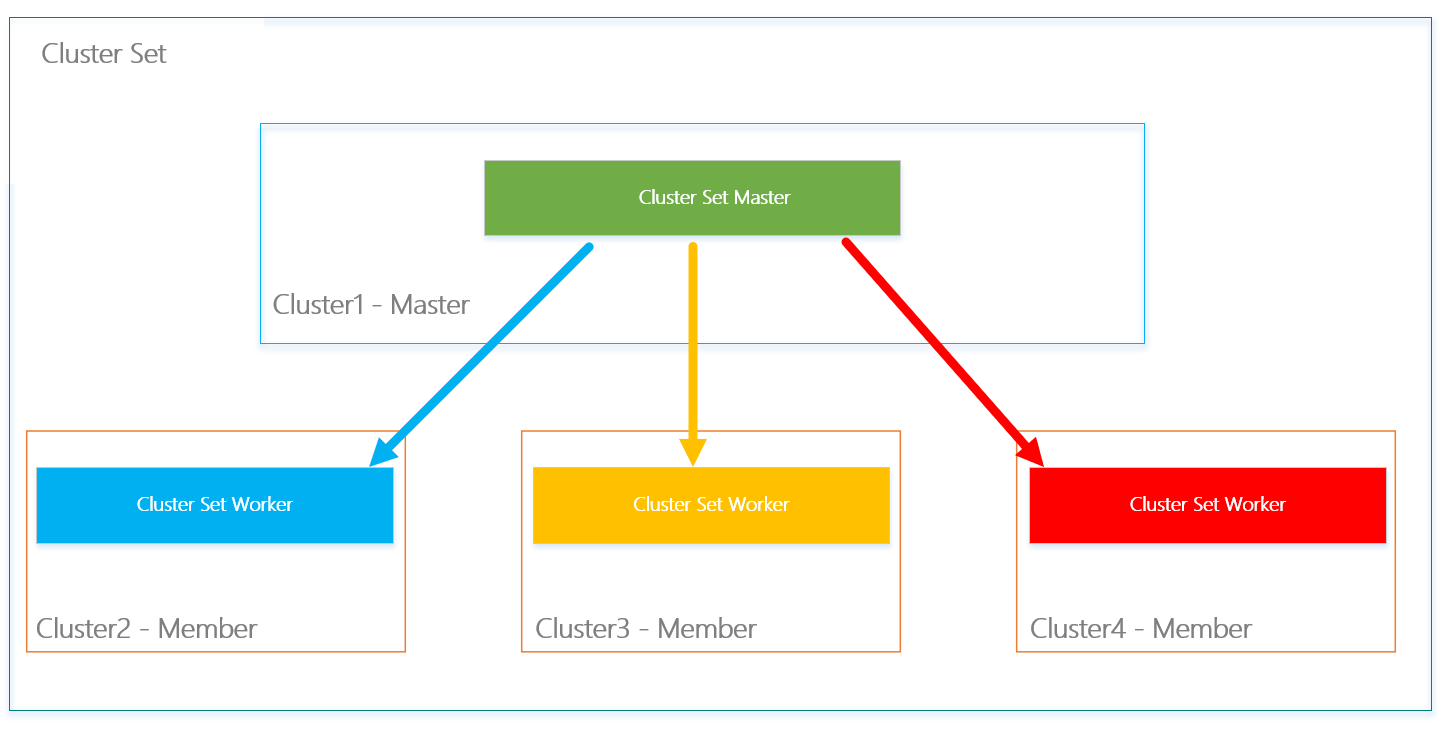Great! You just found out about the greatest hidden gem of Windows Server 2016 which is now scheduled for the Windows Server 2019 release. Cluster Sets already have been announced at Microsoft Ignite 2017, and now also in this blog on Windows Server 2019.
Cluster Sets
Since the introduction of Storage Spaces Direct I’ve seen implementations take off quite well. If you ever encounter an environment bigger than the maximum amount of nodes/disks it makes you think how to overcome this problem.. glad that Microsoft did that as well and solved it!
Cluster Sets is a new scale-out technology that is going to be introduced in Windows Server 2019. A Cluster Set is a loosely-coupled grouping of multiple failover clusters: compute, storage or hyper-converged. Your clients will target one endpoint which is the ‘master’ and the master will distribute the request to the right worker.
Note that ‘Master’ and “Worker’ are actual Cluster Roles in the cluster.
If we take it a step further and see how the storage distribution works we can see it is heavy dependent on the Scale-out File Server role. Microsoft made an enhancement to the SoFS role where it takes the role as “Referral”, which only routes the request to the right SoFS.
Note that when you create an VM, the VM will actually use the storage path of the member cluster.
When the Master cluster is down, your VMs will still work and access the storage on the member cluster.
Scale to Infinity
Maybe ‘infinity’ is a little over the top, but Cluster Sets allow us to scale as a real software-defined datacenter should. We target one namespace for deployments, the deployment software finds the right target for the deployment which matches the need.
Cluster Sets also bring the possibility to scale compute and storage separate from each other, as the master chooses the right places to land your VM or your VM storage which can also be separate clusters.
Availability sets
If you are familiar with Microsoft Azure, you’ve probably heard of the term ‘Availability Sets’ before. With Cluster Sets we can define ‘fault domains’ thus enabling the ‘Availability Set feature’ also for Windows Server 2019. This way we can make sure that virtual machines are not running on the same cluster helping us to gain even more availability for the workloads.
Wondering why we need all this? Two words: Azure Stack 😉
Try it now
As Windows Server 2019 is now released in the Windows Insider program, you can try and build cluster sets today.
Be on the lookout for the next part where I deep-dive in setting up and configuring Cluster Sets.
—
Thank you for reading my blog.
If you have any questions or feedback, leave a comment or drop me an email.
Darryl van der Peijl
https://twitter.com/DarrylvdPeijl




